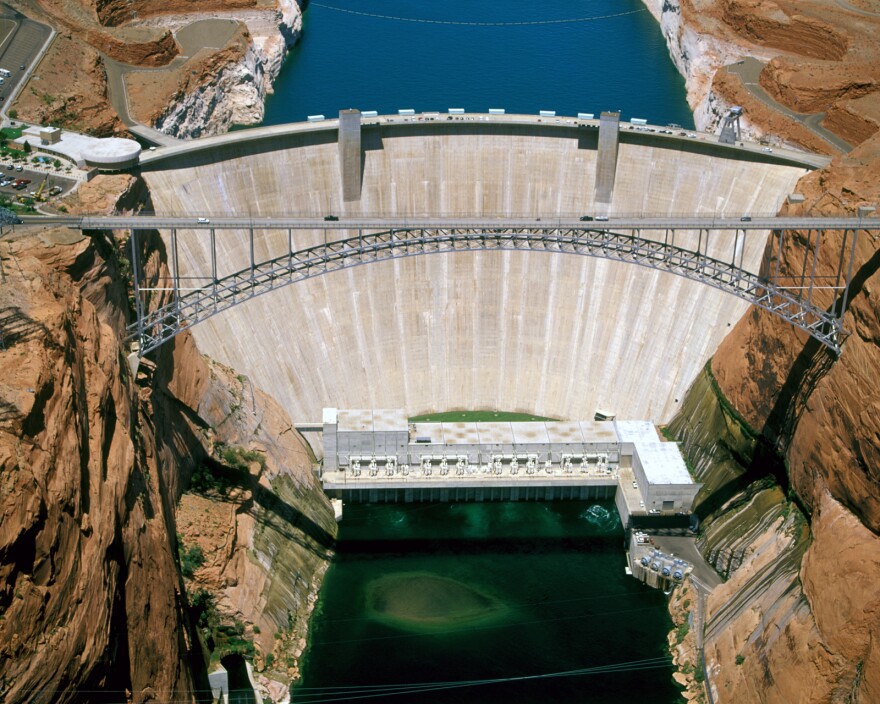Federal officials have proposed a sweeping new plan to manage Glen Canyon Dam for the next two decades. They want to be more proactive in their efforts to restore fish and animal habitat as well as beaches that have degraded in the Grand Canyon since the dam became operational in the 1960s. Arizona Public Radio’s Ryan Heinsius reports.
Glen Canyon Dam blocks nearly 90 percent of the sediment that historically ran through the Grand Canyon.
The U.S. Department of the Interior conducted three experiments in recent years to rebuild those areas on the Colorado River. Each time, the agency released millions of gallons of water from the dam over the course of several days to flush sediment through the canyon. It’s an attempt to mimic the river’s natural floods, and federal officials say the flows have been mostly successful.
Beverley Heffernan with the Bureau of Reclamation says the plan would continue those high flows annually for 20 years.
“The whole idea is that we constantly want to be trying to operate Glen Canyon Dam in a manner that continues to meet our water and power obligations, but also wherever we can, helps do an even better job of protecting and improving the resources downstream,” Heffernan says.
The Colorado River provides water for western agriculture and millions of households. Glen Canyon Dam generates enough power for about 425,000 homes every year.
Federal officials will hold public meetings for the proposal, and a comment period lasts until April.








